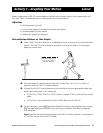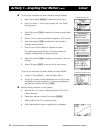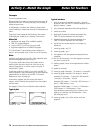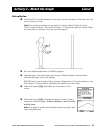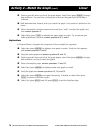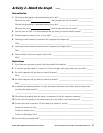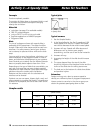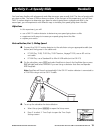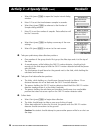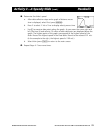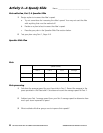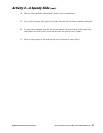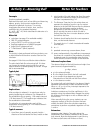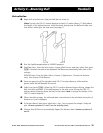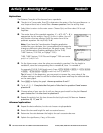
© 2000 VERNIER SOFTWARE & TECHNOLOGY GETTING STARTED WITH THE CBR 2™ SONIC MOTION DETECTOR 19
Activity 3—A Speedy Slide Parabolic
You have been familiar with playgrounds and slides since you were a small child. The force of gravity pulls
you down a slide. The force of friction slows you down. In the first part of this experiment, you will use a
CBR 2™ motion detector to determine your speed or velocity going down a playground slide. In the
second part, you will experiment with different ways to increase your speed going down the slide.
Objectives
In this experiment, you will:
0 use a CBR 2™ motion detector to determine your speed going down a slide
0 experiment with ways to increase your speed going down the slide
0 explain your results
Data collection, Part 1, Sliding Speed
Ê Connect the CBR 2™ motion detector to the calculator using an appropriate cable (see
below) and firmly press in the cable ends.
0 If TI-83 Plus, TI-89, TI-92 Plus, TI-89 Titanium, Voyage™ 200, use an I/O unit-to-
unit cable
0 If TI-84 Plus, use a Standard-B to Mini-A USB cable (unit-to-CBR 2™)
Ë On the calculator, press Œ and select EasyData to launch the EasyData App or press
2 ° and select RANGER if you are using a calculator that does not operate
with EasyData.
Note: EasyData will launch automatically if the
CBR 2™ motion detector is connected to
a TI-84 Plus using a unit-to-
CBR 2™ cable.
Î To set up the calculator for data collection:
a. Select
Setup (press p) to open the Setup menu.
b. Press 2 to select
2: Time Graph to open the Time Graph
Settings
screen.



